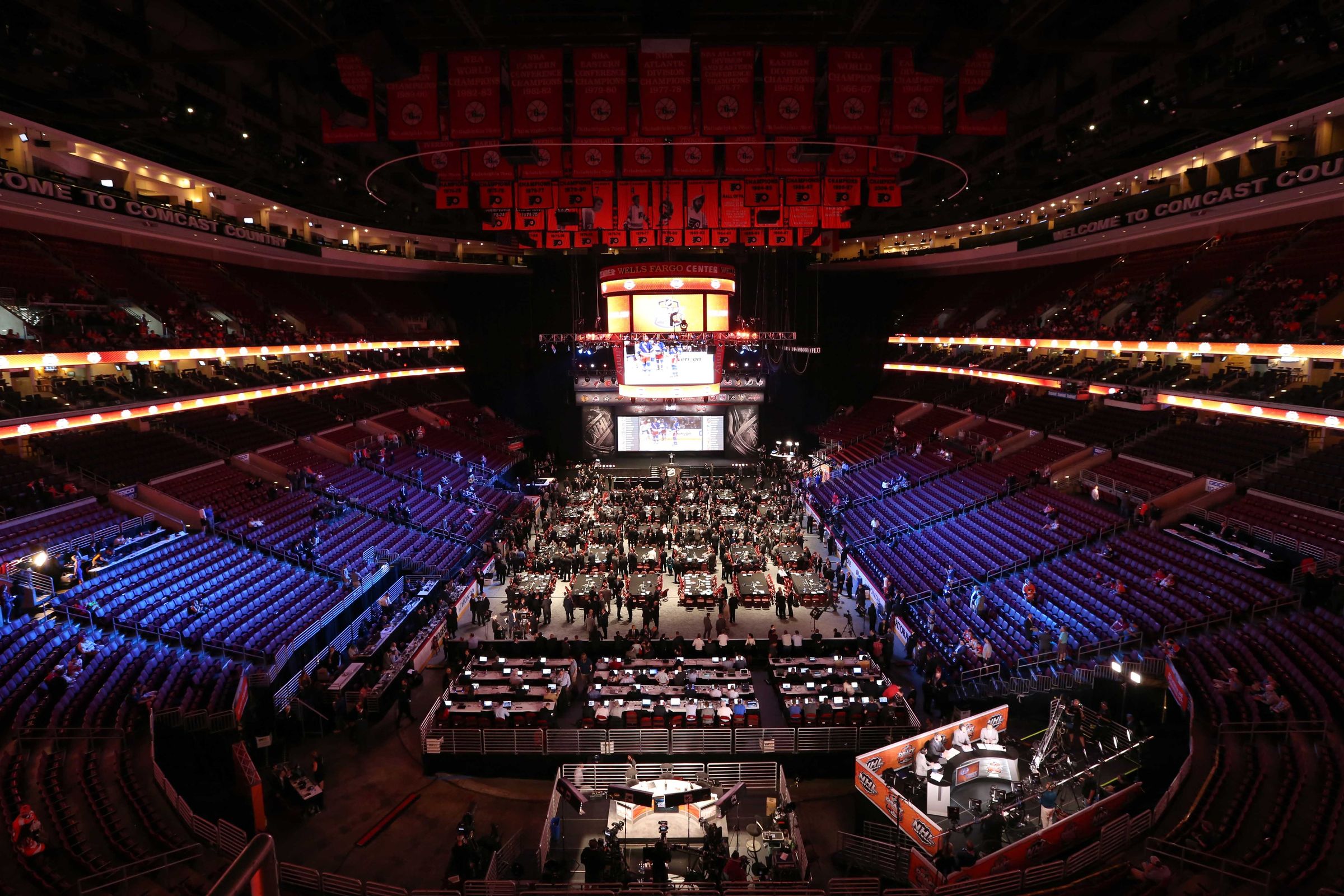When the Toronto Maple Leafs traded for Brian Boyle at the deadline this season, I posed a question: When is buying worth it? Should you buy just to make the playoffs, or only if you view yourself as a true contender?
One of the main responses I received was that this is a weak draft so trading a second doesn’t really matter in the big picture.
That made me wonder: After the first round, are drafts really deep or not, or does the first round really just sway our opinion on an entire draft class?
Note: This is not a column looking at whether the Brian Boyle trade was good. The value on the trade was right regardless of the results here.
Now, judging a draft class is an imperfect science, to say the least. In this scenario, I’m only grading out the players drafted after the first round, making it a little trickier.
Looking through the drafts, I wanted to be able to paint a clearer picture of what was happening. I counted out how many players make it to the NHL for even one game and I used the 200-game mark to give a better indication of full-time NHLers.
Originally I considered using 100 games, but when I started going through it, it didn’t cut off the Ryan Baydas and Joey Crabbs of the NHL, while 200 games pretty well did. If you have played 200+ games in the NHL, you’ve played in a minimum of three seasons and can lay claim to being a legitimate NHLer.
But I didn’t want to just use games played as a mark. Below, you’ll notice another column titled ‘Impact Players.’ I went through all the drafts between 2000 and 2010 and counted top-six forwards, top-four defensemen and starting goalies; the cumulative number of those three counts comprises the ‘Impact Players’ column.
I went by ice time to identify top six forwards (if it wasn’t already obvious). If a player was in the top six among forwards on his team in ice time per game for multiple seasons, I would count him, and the same goes for defensemen.
A player like Tomas Kopecky comes to mind as someone people might not think of as a top-six forward. On the flip side, players like Dominic Moore, Paul Gaustad and Gregory Campbell, who all played long careers in the NHL, would not be considered top-six forwards.
Without further ado, here is how it charted out:
Post-First Round Draft Results: 2000-2010
| NHL Draft | 1 Game | 200+ Games | Total Impact Players |
|---|---|---|---|
| 2000 | 34% | 11% | 6% |
| 2001 | 38% | 15% | 9% |
| 2002 | 30% | 10% | 7% |
| 2003 | 38% | 16% | 8% |
| 2004 | 38% | 16% | 10% |
| 2005 | 42% | 16% | 10% |
| 2006 | 34% | 12% | 8% |
| 2007 | 39% | 12% | 7% |
| 2008 | 44% | 14% | 9% |
| 2009 | 47% | 14% | 10% |
| 2010 | 41% | 8% | 7% |
[wpdatachart id=120]
I should note that I wanted to go beyond 2010, but even looking at 2010, the data was starting to skew because there wasn’t enough time passed. That 8% number in the 200+ games column for the 2010 draft will grow big time in the coming years (players like Alex Petrovic, Oscar Lindberg and Bryan Rust should easily surpass that number).
A few notes of interest here:
- In 2005, the NHL went from a nine round draft to a seven round draft. You can see that the numbers are generally higher since then (and this doesn’t include some pre-2000 drafts that were just dreadful).
I - I would keep in mind that the drafts from around 2007 onward are still very much playing out and those numbers have potential to increase over time still.
I - Other than a few outliers on the low end, we can see that the drafts generally produce around the same percentage in the main categories. The 2000 draft has been notoriously considered a weak draft.
I - Conversely, the 2003 draft is considered one of the best — if not the best ever — but after the first round, it does not stand out as anything special.
I - The 2002 draft has been considered weak, yet it shows as average compared to all the other classes after the first round.
I - The 2007 draft class (where JVR went second overall) stands out as one that is generally pretty poor from start to finish. Patrick Kane was obviously a legitimate first overall pick, though.
I - I would suggest there is not much evidence here to say that picks should be valued less, after the first round anyway, when a draft is considered strong or weak. In fact, if a draft class is considered weak, I’d even say trading down and accumulating more picks makes sense because drafts generally produce similar results after the first round.
Conclusion
The first thing to remember is that any pro draft is a crapshoot. The second thing is that no team can consistently ‘beat’ the draft. The NHL draft is even more volatile than counterparts in the NFL and NBA because the vast majority of prospects are years, if ever, away from playing in the league, while other sports have the bulk of their draft class step right into their team and potentially even fill a need.
A lot of work has been done on NHL draft pick value (I suggest this value chart by Michael Schuckers and this expected draft pick value study by Scott Cullen). Now, when we look at the work above, we can say that drafts generally do not vary too much year-to-year in overall value drafted. Naturally, there are outliers where we can see some weak draft results, and that is where scouts will provide value in any given year to measure the depth of a draft. But, by and large, I would not be making decisions based on the perceived depth of a draft – if anything, it might be an opportunity to beat the market and find extra value.



































